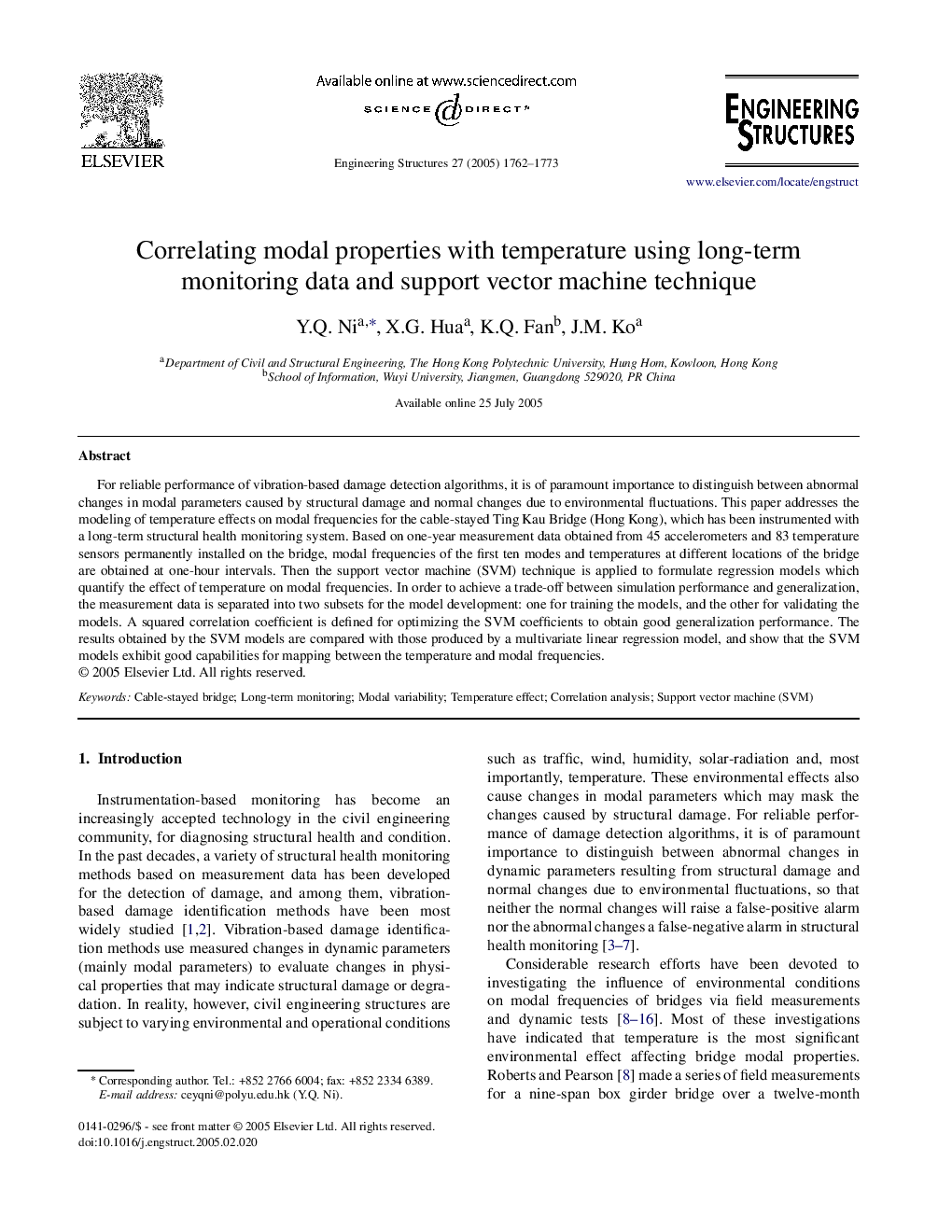| Article ID | Journal | Published Year | Pages | File Type |
|---|---|---|---|---|
| 10287047 | Engineering Structures | 2005 | 12 Pages |
Abstract
For reliable performance of vibration-based damage detection algorithms, it is of paramount importance to distinguish between abnormal changes in modal parameters caused by structural damage and normal changes due to environmental fluctuations. This paper addresses the modeling of temperature effects on modal frequencies for the cable-stayed Ting Kau Bridge (Hong Kong), which has been instrumented with a long-term structural health monitoring system. Based on one-year measurement data obtained from 45 accelerometers and 83 temperature sensors permanently installed on the bridge, modal frequencies of the first ten modes and temperatures at different locations of the bridge are obtained at one-hour intervals. Then the support vector machine (SVM) technique is applied to formulate regression models which quantify the effect of temperature on modal frequencies. In order to achieve a trade-off between simulation performance and generalization, the measurement data is separated into two subsets for the model development: one for training the models, and the other for validating the models. A squared correlation coefficient is defined for optimizing the SVM coefficients to obtain good generalization performance. The results obtained by the SVM models are compared with those produced by a multivariate linear regression model, and show that the SVM models exhibit good capabilities for mapping between the temperature and modal frequencies.
Keywords
Related Topics
Physical Sciences and Engineering
Earth and Planetary Sciences
Geotechnical Engineering and Engineering Geology
Authors
Y.Q. Ni, X.G. Hua, K.Q. Fan, J.M. Ko,
